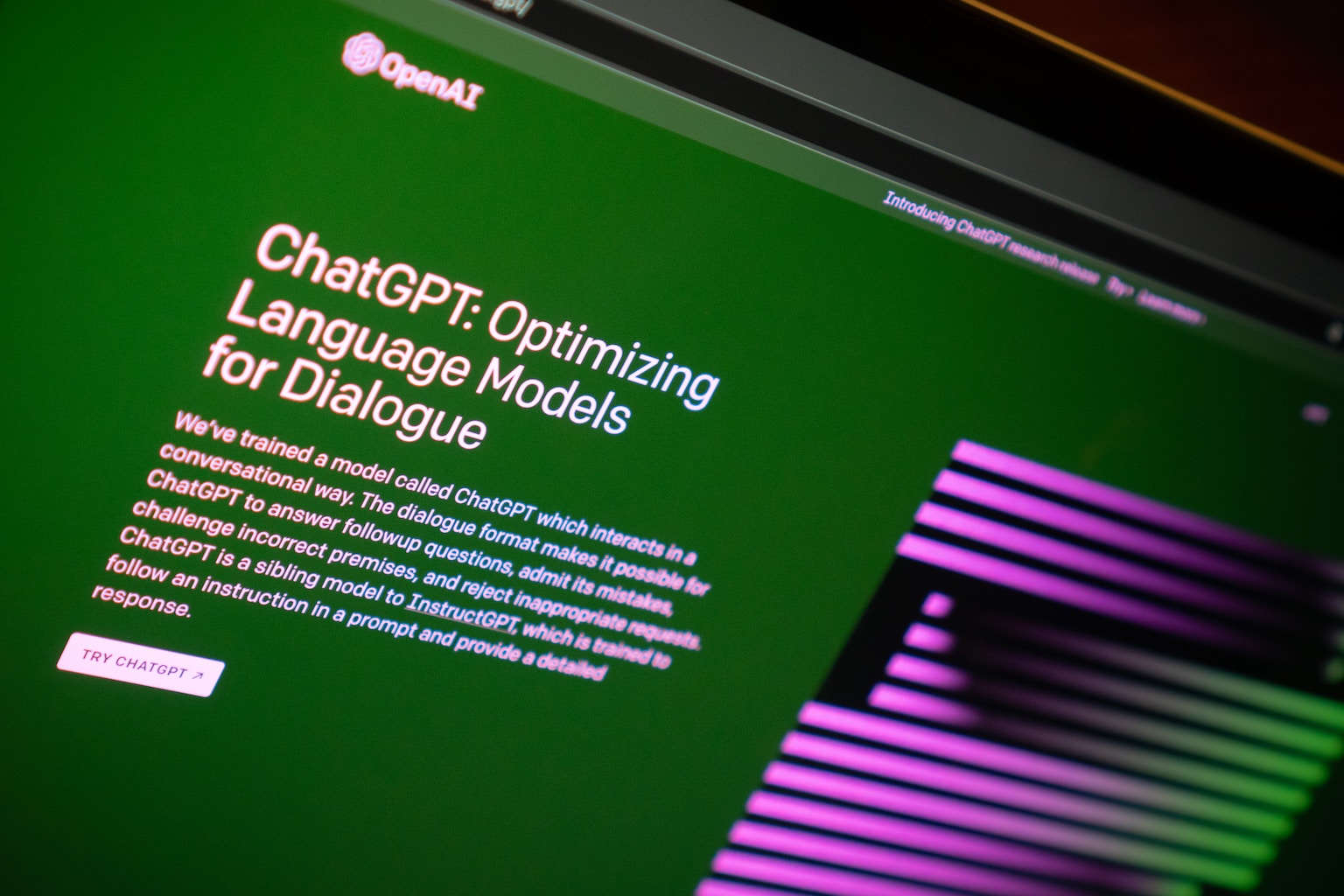Outline
- Introduction
- How are marketers using AI today?
- 6 AI-driven trends in marketing
- 3 challenges AI marketing will push to overcome
- Final word
Subscribe
It only took a couple of user-friendly, AI-powered tools going viral for even the biggest skeptics in marketing to get on board and start figuring out how to use AI to make their marketing more effective.
To put a number on it, the market for AI in marketing was estimated at $15.84 billion in 2021 and is projected to increase by more than $107.5 billion by 2028.
This sharp increase in investment is already leading to big changes in the way businesses use and navigate AI. In this article, we explore:
How are marketers using AI today?
There are plenty of ways AI has already embedded itself in the marketer's day-to-day including:
Predictive AI: AI can help marketers predict performance on things like email open rates and ad performance.
AI image generation: AI can generate images that marketers can use in campaigns.
AI copywriting: AI uses machine learning and natural language processing (NLP) to generate copy that fits a particular tone, style, and format.
Chatbots: AI-powered chatbots work using NLP technology to interpret knowledge and understand conversation structure to respond to customer queries, instead of relying on pre-programming.
Data enrichment and cleanup: AI can help marketers clean up their contact lists and enrich data to remove broken records and data mismatches.
Social media: AI and machine learning can be used in social media marketing to create high-performance campaigns, provide insights on buyer personas, suggest optimum publishing times, and track th
e performance of marketing campaigns.
Automation: AI can automate repetitive manual tasks, saving marketers time and money.

6 AI-driven trends in marketing
1. AI content creation shifts as search engines clampdown
In 2020, Open AI launched the Generative Pre-Trained Transformer (GPT-3), which is a model trained with over 175 million machine learning parameters, so it can create any kind of copy and perform multiple functions like translation, and even code websites.
Since then, AI's ability to create content has improved. Never-before-seen content — including images and even videos — can be created in an instant by anyone.
As this content becomes more reliable, adoption rates are soaring. Ryan Turner, founder of Ecommerce Intelligence, recognizes the increased adoption of AI-powered writing tools in marketing. “AI content creation is becoming more and more popular, with brands leveraging tools to build article outlines, suggest keywords for SEO, write social media posts, and in some cases even create full blog posts and articles without much human input,” says Turner.
For Turner, the technology will only get more effective over time. “The more it gets used, the more feedback is available, and the more effective and refined the algorithms become. As this happens, brands will start to rely on it more and especially for time-consuming tasks such as content creation,” says Turner.
As more companies, organizations, and individuals adopt AI-generated content, search engines like Google are forced to reevaluate how this content ranks and appears. Most recently, Google's March 2024 core algorithm update saw sites made with AI-generated content being penalized. Even prior to this, AI-generated content struggled to meet Google's existing quality thresholds since authorship and expertise became important parts of ranking.
This doesn't mean marketers will stop using AI to help them generate content. Instead, applications like ChatGPT can be used for things like producing article outlines, summarizing research papers, or generating executive summaries. In other words, AI can become a writer's assistant, giving humans some time back to focus on the content they produce, rather than everything around it.
2. Strategizing around the 'zero-click search'
GenAI-powered search are changing the role of SERPs, and impacting brand's performance. Take a look at the image below — this is a real search conducted and it shows how far down the page the first organic result appears.

As the SERPs use AI to generate more useful summaries and featured snippets, more searches are becoming 'zero-click'. In other words, the search inquiry is answered without needing to click on an article. While the brand awareness benefits are still there for brands that land on the first page and in featured snippets, the resulted traffic has taken a hit.
Semrush conducted a study on zero-click searches in May 2022 and observed the patterns of actions people undertake after a Google Search. Of these, a huge 25.6% of searches resulted in zero clicks. When you layer on the number of people who entered a new Google keyword (17.9%), those who clicked within Google either to switch tabs to News or Images or click on a carousel card (9.7%), and those who clicked on a paid ad (1.8%), what's left is less than half of searches clicking on organic results.

This study was conducted nearly two years ago. In the time that's elapsed, Google has introduced more AI-generated and enhanced SERP features like knowledge panels and local packs that are likely to increase the volume of zero-click searches.
All of this is leading marketers to adjust their strategy to avoid certain topics that can be answered without clicking (e.g. definitions) and to create content with the aim of landing in the Featured snippet section.
In summary, AI has changed the SERPs and, as a result, SEO and content marketing are evolving to keep up.
3. Even greater personalization — and higher customer expectations
With the help of AI, personalization is about more than segmenting and targeting audience groups or updating content fields, it's about heading towards building fully-personalized, end-to-end journeys for each individual lead and customer.
This will require sophisticated use of predictive analytics, content generation, behavioral triggers in automated flows, and improved online-offline connection for brands with a physical presence. This level of true one-to-one personalization is still somewhat of a pipedream, but we're getting closer and closer.
Rajesh Namase, Co-Founder of TechRT, agrees that AI-powered personalization will become more prevalent. “Thanks to AI, marketers will be able to create more personalized experiences for their customers,” he says. “By collecting and analyzing data, AI can help marketers understand each customer’s individual needs and preferences. This means that customers will see more relevant ads and messages from brands they know and trust.”
Turner identifies the importance of personalization within ecommerce specifically. “We’re seeing a lot of personalization in the ecommerce industry, where online retailers are using AI-based tools to recommend products to users based on their behavior, so each person gets a unified marketing experience via multiple channels such as emails, social ads, and on-site deals and promotions,” says Turner.
Natalia Brzezińska, Marketing and Outreach Manager at PhotoAiD, predicts that marketing will begin to use advanced AI solutions to make advertisements more engaging in a competitive and saturated landscape. “Thanks to AI solutions, like neural networks, biometrics, and eye tracking, we can better understand the attention mechanisms, so we know what buyers see as engaging and relevant,” says Brzezińska. “Knowing what piques customers’ attention, we can adjust advertisements to make them attractive to target groups. Because personalized marketing improves the costs we spend on campaigns, this trend will probably shape the future of marketing.”
4. Conversational AI will be enhanced by Large Language Models (LLM)
AI language tools are being adopted by businesses far and wide. According to a survey of tech leaders, 60% said their budgets for AI language technologies increased by at least 10% in 2020. 33% of them said their budget increased by 30%.
However, there are challenges with natural language processing (NLP) – the type of AI that allows computers to understand human speech – as highlighted by Matthew Ramirez, founder of AI copy generator tool Rephrasely and Forbes 30 under 30 alumni. “NLP is still not at a level where it can be used by all,” says Ramirez. “Even Siri, the most used natural language interface, struggles to understand words that are not part of its dictionary.”
In order for NLP to improve, it needs more data. “Unlike humans, AI is not capable of learning from one experience,” says Ramirez. “It needs to be fed hundreds or thousands of examples to understand what is right and wrong.”
One language model type that can fulfill this need is large language models (LLM). LLMs are tens of gigabytes in size and are trained on enormous datasets. They have billions of ‘parameters’, in other words, the parts of the model learned from historical training data that determine its skill at solving problems, such as generating copy.
With LLMs, marketers can harness adaptive conversational tools that facilitate better customer experiences. This is definitely a space to watch.
5. Wider adoption of voice search optimization
The number of voice assistant users is set to grow to 157.1 million in 2026, thanks in large part to smart assistants like Google, Siri, and Alexa. As voice search becomes a part of our everyday lives, new use cases emerge.
This is something Nunzio Ross, CEO and Founder of Majesty Coffee, predicts will be adopted more broadly within marketing — particularly for shopping commands,
“AI will continue to improve speech recognition and conversational queries in marketing,” says Ross. “As more and more households use voice commerce, it is imperative for marketing teams to leverage the growth of shopping voice commands and integrate them into their strategies and ensure that consumers get the best value and experience with emerging technologies that aim to improve accessibility and convenience.”
Shopping commands and localized marketing are the two most obvious places for voice search to thrive, but over time we could see B2B companies extend their chatbots to include voice search, giving users new ways to navigate products and features.
6. Formalized AI ethics
Because artificial intelligence is continually learning, making accurate predictions about its applications or outcomes is almost impossible. Some of these unforeseen applications or outcomes have resulted in ethical debates, particularly around issues like copyright, data privacy, using real people's likeness (visual and audio) transparency, and avoiding bias.
Many of these debates are incredibly complicated and it could take a long time for government bodies to reach a consensus and potentially impose regulations or legislation around the use of AI.
Before all that happens on a global scale, we might start to see businesses that rely on AI in their marketing roll out their own formalized rules for use, inclusive of things like guidelines for bias awareness, how data is used, how privacy can be protected, the type of visual or audio content that can and cannot be created, and even guidelines around the use of certain prompts.
As businesses get ahead of this more formalized approach to ethically working with AI and continue to adopt the technology, these formalized rules or guidelines will continue to evolve.
This really is completely new territory — and more than a trend, but what is sure to be a conversation that expands and evolves over the next decade or more.
3 challenges AI marketing will push to overcome
Increased adoption of AI has also revealed its limitations. This is true of any new technology, and as new use cases are being explored, so too are improvements to the existing platforms and apps. Over the coming years, AI will face, and push to overcome, these three major challenges.
1. It lacks common sense and reasoning
Ramirez points out AI’s lack of reasoning as a shortcoming: “AI lacks common sense or the ability to explain its choices,” says Ramirez. “For example, if you ask an AI assistant why it didn’t book a flight to a particular destination, it will not be able to provide you with a clear answer. These are some of the problems that need to be solved before AI can become truly intelligent.”
This is a big one because AI can make decisions for marketers and individuals based on logic or data we provide. But these decisions won't be completely trusted until the AI can explain exactly why a choice was made. And that trust will be essential to testing how AI behaves with bigger, more consequential decisions.
2. It's biased
We mentioned bias as an ethical concern — essentially the AI can only learn from the data and information it has available, so it will perpetuate any human biases that exist within the training data it is supplied. It gets more complicated than that, too.
Brzezińska points out that AI isn’t free from bias, because AI tools are programmed by the society they exist within. “Current AI is creating a cultural divide,” says Brzezińska. “This problem arose because algorithms take in data influenced by a society that created it, becoming as biased as we are. We should use more diverse data to enhance cultural diversity in AI.”
As the National Institute of Standards and Technology (NIST) explains, "Systemic biases result from institutions operating in ways that disadvantage certain social groups, such as discriminating against individuals based on their race. Human biases can relate to how people use data to fill in missing information, such as a person’s neighborhood of residence influencing how likely authorities would consider the person to be a crime suspect. When human, systemic and computational biases combine, they can form a pernicious mixture — especially when explicit guidance is lacking for addressing the risks associated with using AI systems."
The biggest concern here is an ethical one — and that is rightly the main impetus for making changes to the technology to overcome bias.
Beyond the ethical concern, there's a potential performance issue. Bias typically leads to poor decision-making and, for a marketer using AI to automate decisions in advertising campaigns or automated journeys, those biased decisions could result in lowered performance, missed insights, or incorrect assumptions.
3. It is predictable and repetitive
In saturated, competitive spaces, it's almost impossible to cut through without a strong, unique voice. Right now, much of what AI is creating is easily repeatable, and even predictable, presenting a challenge for marketers who lean too heavily on the technology to create content or run advertising campaigns.
Ben Tibbits, Managing Director at Broadband Deals, says, “There is an undeniable occurrence of data similarity across many of the AI tools on the market today,” he says. “For example, many of the social media AI tools will aggregate data and suggest social post formats based on those which have performed well in the past. This works in theory, however when many people in the same niche or sector are using the same AI tools it becomes glaringly obvious just by looking at the format of the post/article alone.
“As a point of change, AI tools need to understand that recommended formats based on their internal data are going to be adhered to, and they need to vary these formats via tools before outputting to the user,” suggests Tibbits. “Otherwise, every social post using AI is going to look the same.”
Final word
It's an exciting time to be in marketing, with plenty of AI-powered change in the horizon. While marketers and businesses may face some big AI-related hurdles, the potential benefits will make them all worthwhile.

Try Ortto today
Build a better journey.

Product
Pricing
Solutions
Features
About
Resources






